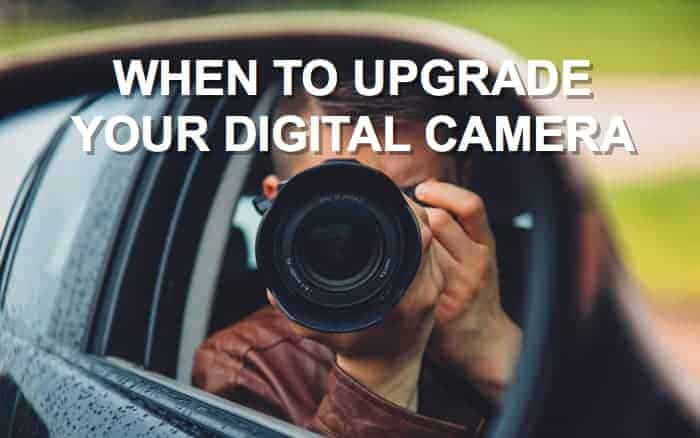Ever wonder when you should upgrade your digital camera? A reader recently wrote in with a digital camera question related to full frame versus crop sensor.
Question: I am thinking of shooting my movie with a 28mm lens on the 70d. What do you think? Am I better off upgrading to a full frame digital camera such as the Canon 5d Mark III? Or sticking with the 70d?
Answer: The difference between a full frame and a crop sensor is more of a personal preference. There is a lot of talk about shooting full-frame, but a lot of digital cameras (Alex Amirra, for example) are 35mm size – less then full frame.
From the info you've given me, I recommend sticking with the 70d. There might not be a huge difference in how the 70d and the 5d handle, but if you know the 70d better, it's wise to stick with what you know.
As for utilizing a 28mm lens, it sounds like an interesting choice. Remember that if the lens is designed for full-frame, on the 70d it will behave like almost like a 45mm lens – close to a 50mm, which is considered a “normal” lens field of view. On the full-frame you'll get a wider shot, which could be what you want, but might make close-ups a little different.
When To Upgrade Your Digital Camera
According to digital camera manufacturers, you should update your camera just about every year – And if you can afford to do that, would you fund my next feature?
In all seriousness, for owner-operators, upgrading your digital camera should be done with care. New camera models are released almost every year and many filmmakers feel they need the latest and greatest camera to stay competitive. But that it not always the case.
Before you plunge in with your credit cards blazing, one of the first considerations for upgrading your digital camera is to ask yourself if you actually NEED the new camera. We always want the new toys, but you need to carefully consider: What will spending my money on this camera add to my abilities as a shooter?
Too often, digital camera updates consist of marginal changes to framerates and processors. But these enhancements may not make significant changes to your shooting or workflow. For example, the Canon C100 did not originally shoot 60 progressive frames per second, but the C100 mark II did along with some other good ergonomic changes, viewfinder changes, and a small lowlight improvement.
Don't get me wrong. The C100 and C100 mark II are both great digital cameras, but will the value that you get from the upgrade significantly improve your shooting?
Another question to consider is if you can achieve equivalent results without spending money. For example, Sony recently announced the new A7s mark II. And I just purchased my A7s a little less then a year ago (and I still love that camera).
The A7s mark II is a definite improvement on the A7s – 4k internal, 120 fps at 1080, as well as a lot of other enhancements. However, I don't expect to use 120 fps in my shooting (I usually don't need to go beyond 60 fps for slow-motion shots), so that's not a useful improvement for me.
When we are talking 4k audio, that is a different beast. I already decided to purchase a Ninja Assassin – Not a Hitman, but the Atomos external 4k recorder. I used the Ninja 2 before and loved it. And after selling a little (much more outdated) equipment, the Ninja Assassin is within reach.
The large screen and shooting tools in the Ninja Assassin is something that I will be able to continue to utilize after I do upgrade my camera. For me, the value added from the recorder makes up for the price difference between the A7s mark II and the A7s I already own.
Finally, you have to consider the “hidden costs” of a new digital camera. These are things like memory cards, batteries, and workflow support (such as hard drives) as well as what you can adapt from your current kit.
When the Blackmagic Pocket Cinema Camera came out, it sounded great for under $1,000. But after I sat down and budgeted out what I would need to effectively shoot with it – I found out the cost of high speed memory cards, lens adapters (if not entirely new lenses), extra batteries, adjusted camera supports, external monitors, more hard drives for raw footage… It added up to close to $2,000 IN ADDITION to the cost of the digital camera itself!
New cameras are being produced all the time, but we don't always need to buy the latest and greatest camera body to be able to shoot effectively. And while we save our pennies, the real goal is to actually utilize the digital camera we have and keep on shooting!


